A touch of flamboyance
Another sun-drenched, aroma-filled day in Marrakech and I am walking up a road with neatest curbs I have seen so far in the three days I have been exploring the city.
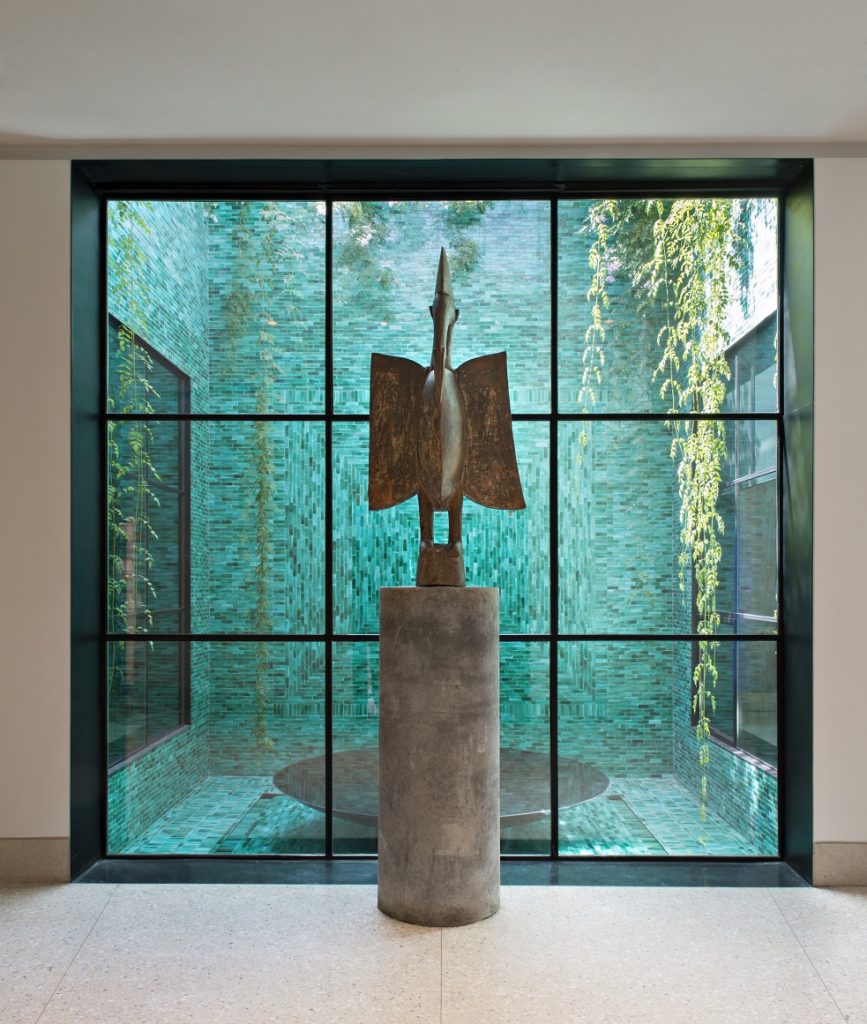
My first stop on Rue Yves Saint Laurent is the Jardin Majorelle, where I meet the vibrant and extremely hospitable Zora el-Hajja, who oversees communications here. She begins her tour of this museum and garden, for which she has a real passion, by taking me to the museum entrance, where she points out how the morning light creates a clever, playful shadow on the pavement – a reflection of the gold-lettered signage ‘Musée YVES SAINT LAURENT Marrakesh’.
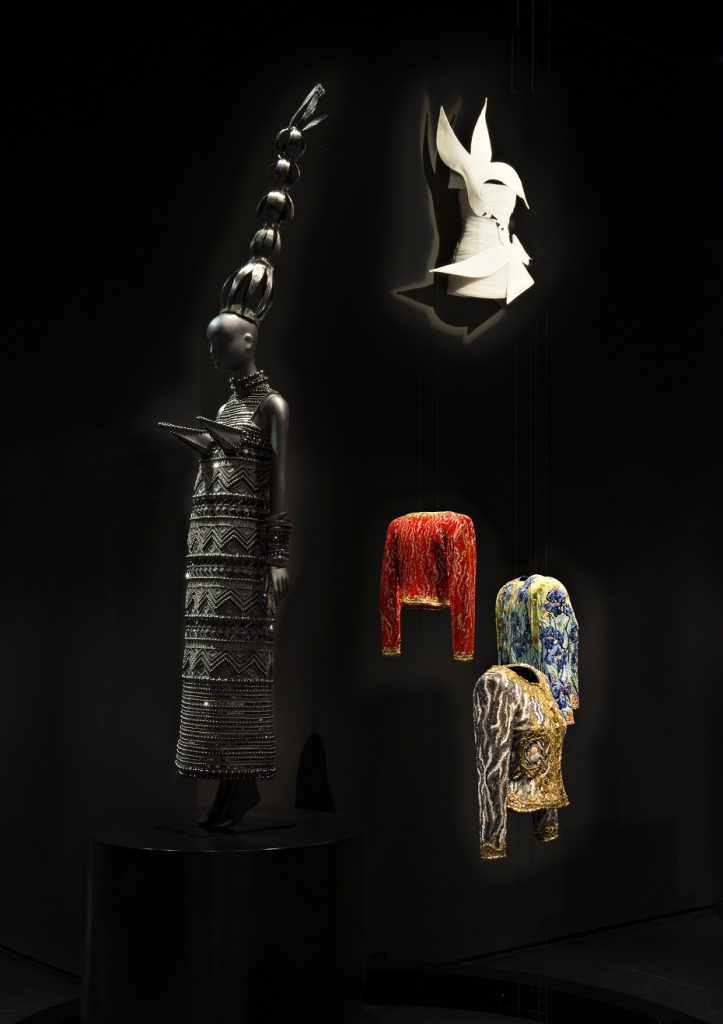
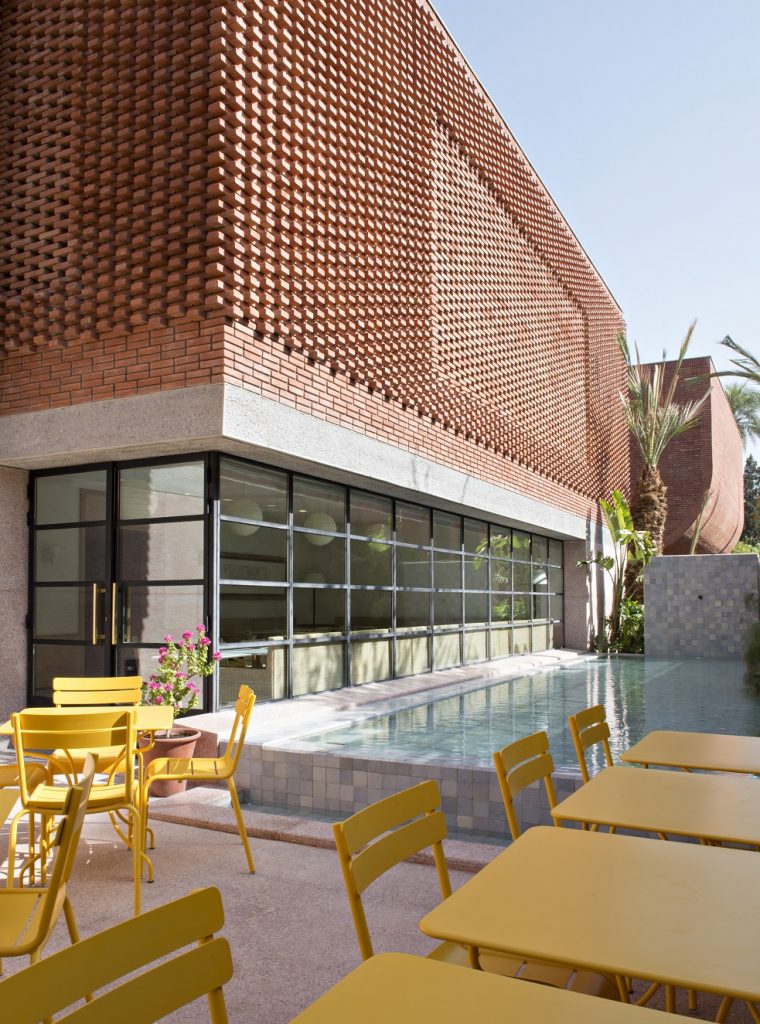
The building structure is simple and yet elaborate – created by KO studio, the architectural design duo Olivier Marty and Karl Fournier. Inspiration came from their research into the couturier’s archives: they were struck by sketches showing curves running alongside straight lines and by the succession of delicate and bold forms that characterises the work of Yves Saint Laurent. The façade of the building appears as an intersection of cubes with a lace-like covering of bricks, creating patterns that recall the weft and warp of fabric. As with the lining of a couture jacket, the interior is radically different: velvety, smooth and radiant.
On entering, the first piece displayed for the visitor is an iconic sculpture of the Calao bird (Great Hornbill) – displayed up high on a pedestal. It is believed by the Senufo tribes across Africa (Mali, Ivory Coast and Burkino Faso) to be one of the first creatures to appear on earth and to be the provider of prosperity, as well as a symbol of fertility and virility.
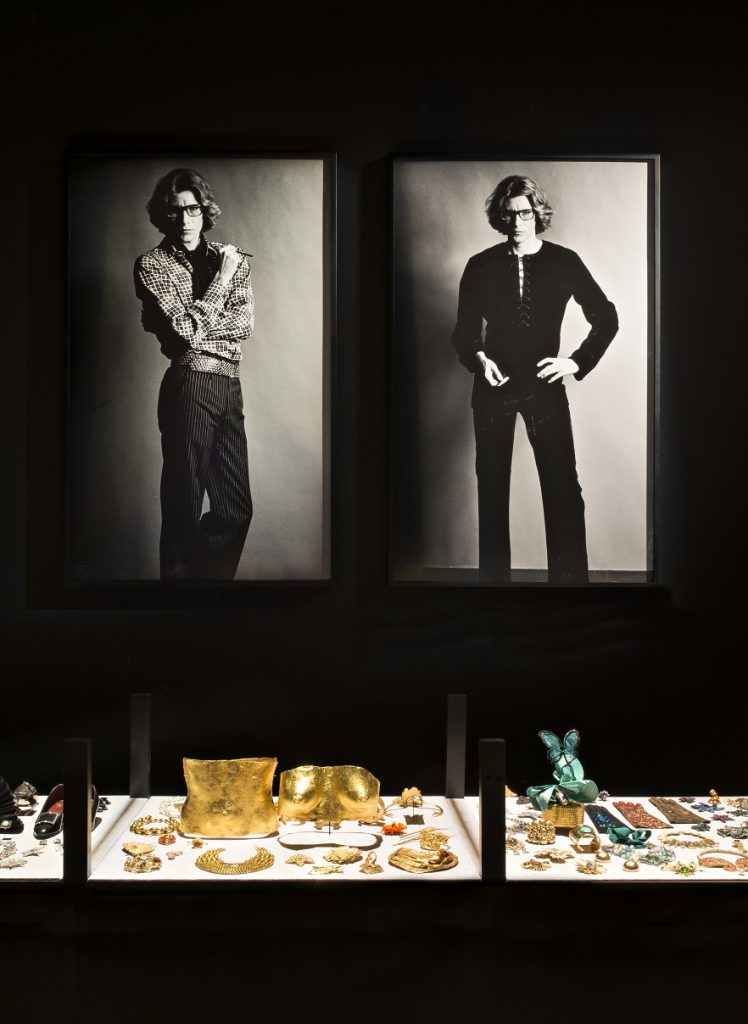
The museum contains a hall for visiting exhibitions, a theatre, the main gallery and a café. But I am here to see the creations of Yves Saint Laurent and to gain a little more insight to what he brought to the world of fashion. In particular, I am curious about the progressive 1966 ‘le smoking’ – the first tuxedo suit designed for women. “For a woman, le smoking is an indispensable garment with which she finds herself continually in fashion because it is about style, not fashion. Fashions come and go, but style is forever” (YSL).
Dedicated to the work of the great couturier, the museum conserves a part of the collection belonging to the Fondation Pierre Bergé–Yves Saint Laurent. Housed at 5, Avenue Marceau in Paris, the collection includes 5,000 articles of clothing and 15,000 haute couture accessories, as well as tens of thousands of drawings.
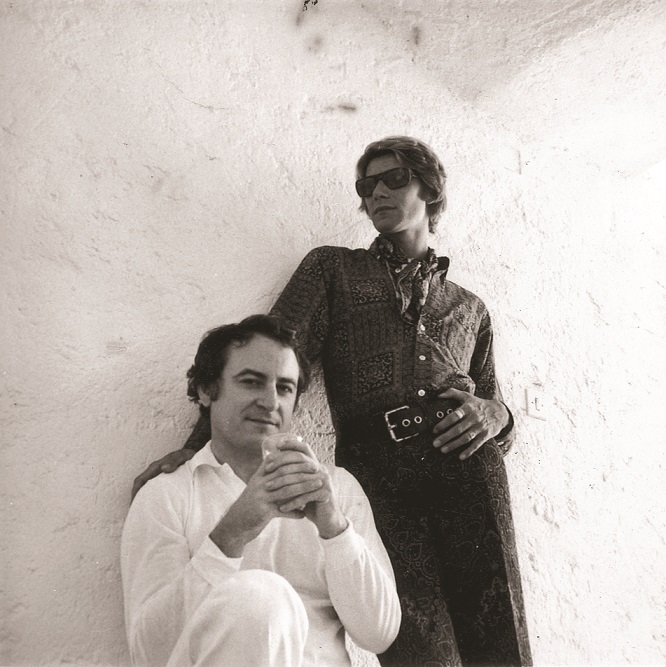
The 50 garments found proudly displayed in Marrakesh on individually designed and formed black mannequins have been chosen to give a thorough overview of YSL’s many phases of expression, design language and design influences. The chosen pieces are a colourful summary of the couturier’s appreciation of life and all its experiences. The 50 pieces chosen are displayed around themes dear to Yves Saint Laurent – Masculine-Feminine, Black, Africa and Morocco, Imaginary Voyages, Gardens and Art – and offer an original interpretation of his work. The garments on display are rotated regularly, in order to ensure their conservation and to constantly revive the experience.
Apart from my excitement at having seen the ‘le smoking’ style jackets and suits on display as part of the Masculine-Feminine section, I was delighted to discover that the exhibition also showcased YSL’s art-inspired work. He literally took inspiration from artists he loved, such as Van Gogh, Matisse, and Picasso, and recreated their unique styles by transposing them into fashion garments with his touch. Perhaps the most famous of his art-influenced designs was the Mondrian dress, labelled ‘the dress for tomorrow’ when he designed it in 1965.
A flamboyant but tasteful large wall photograph of YSL endorses the gallery exhibiting the pieces – as the artist overlooks the visitor’s journey through his work, forever caring for his creations.
The museum boasts an exquisite lighting design that creates an encapsulating space full of imagery, sound, texture and colour and the café – Le Studio – cannot be left unmentioned. Taking its name from Yves Saint Laurent’s workspace at 5 Avenue Marceau, it incorporates his sayings on love and beauty on its menus, giving the visitor a further insight into the spirit of the man.
The pale-coloured wood, plaster light fittings and white marble at its entrance create a monastic yet contemporary feel, while a large, panoramic drawing by Ulrich Gassmann of Yves Saint Laurent’s Paris studio reminds us of the café’s name. The warm saffron colour theme, and carefully designed outdoor and indoor spaces, offers a quiet space to the visitor in which to savour the beauty of art and fashion at this museum, a place to contemplate an exposé that aims to give us an intimate rendezvous with Yves Saint Laurent.
“In Morocco, I realised that the range of colours I use was that of the zelliges, zouacs, djellabas and caftans. The boldness seen since then in my work, I owe to this country, to its forceful harmonies, to its audacious combinations, to the fervour of its creativity. This culture became mine, but I wasn’t satisfied with absorbing it; I took, transformed and adapted it.”
Yves Saint Laurent, 1983








